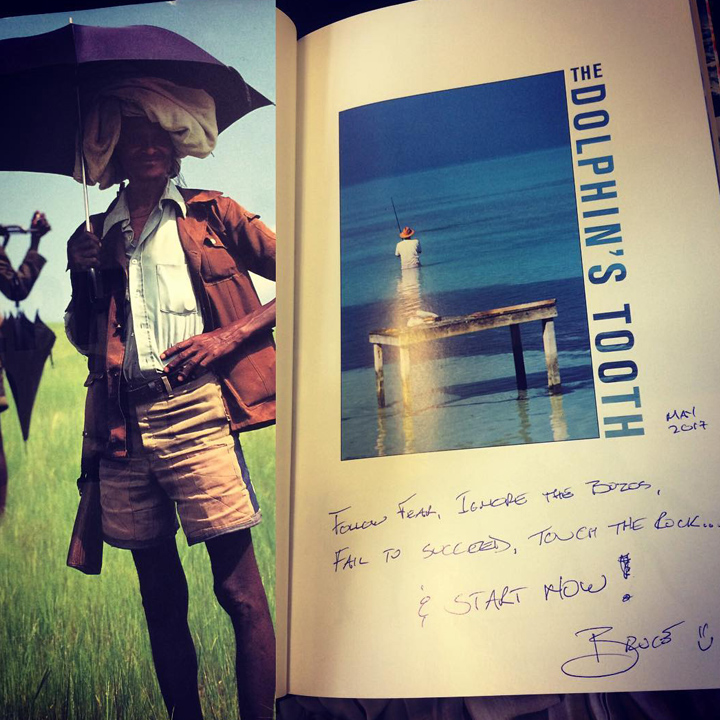
According to Takekawa, Fanalei was the primary dolphin-hunting village and has continued hunting on a regular basis in more recent years. As of the mid-1960s, some of the villages had stopped the hunt while others continued, including Lau-people from North and South of Malaita.

This expansion could be due to an increased market demand for dolphin teeth, resulting from a move towards a cash economy and the availability of Australian currency. However, in 1964, the scale of hunting increased markedly, resulting in catches of several thousand dolphins per year. Dolphin hunts used to be widely distributed in time, with probably some years between the hunts.

also reported that dolphin hunting stopped some time before World War II. However, hunting was revived at Fanalei in 1948 by William Masura, the local vicar and then introduced anew at other Lau villages (Walande, Ata'a, Felasubua, Sulufou and Bita'ama) by Father Martin Fia in 1958. Oral history from Fanalei village indicates that the dolphin hunt might have stopped around the middle of the nineteenth century, maybe in relation to the introduction of Christianity. Originally, the drive hunts did not occur annually.

which village went hunting and when) but previous reports indicate that it varied substantially over the years. The dynamics of the hunt through history are not clear (e.g. However, it could potentially be much older.Īlthough there is a general perception that drive hunts for dolphins are conducted throughout the Solomon Islands, in fact this traditional practice is largely confined to a few villages on the island of Malaita and involves only Lau-speaking people. Based on oral history, it most likely predates the arrival of the first missionary in the mid-nineteenth century. The practice of drive hunting was first documented during the early twentieth century, but it remains unclear when and where the hunt was initiated or introduced into the culture. However, the meat from the carcasses is also consumed, either within the hunting villages or after being sold locally on other islands and especially Honiara, Guadalcanal. The main objective of the drive hunt is to obtain teeth that are used as traditional currency, bride price, adornment and, more recently, for cash sale. This export trade is focused on the capture of Indo-Pacific bottlenose dolphin ( Tursiops aduncus), a species that is not targeted by hunters, presumably because it does not respond to traditional driving techniques. It is important to note that the controversial live-capture export trade of dolphins, initiated by the Solomon Islands in 2003, does not relate directly to traditional drive hunting. Although a number of species have been hunted in the Solomon Islands, spinner dolphins Stenella longirostris and pantropical spotted dolphins Stenella attenuata have been the most common species targeted since the 1960s. The hunters manoeuvre the canoes into a ‘U’ shape around the dolphins while using the sound as an acoustic barrier to drive the dolphins towards shore where they are killed. Hunters operate in close coordination from 20 to 30 traditional canoes and, when dolphins are found, clap together rounded stones to create a percussive underwater sound. The Solomon Islands, in the western South Pacific, are well known for the practice of dolphin hunting, where hunters use unique traditional techniques to drive schools from the offshore into shallow coastal waters. The large number of dolphins killed and the apparent incentive for future hunting offered by the increasing commercial value of teeth, highlight an urgent need to monitor hunts and assess the abundance and trends in local populations. We also found the local price of a dolphin tooth had increased from about US$0.14 (SBD$1) in 2004 to about US$0.70 (SBD$5) in 2013. A summary of all available records from 1976 to 2013 documented a minimum total of 15 454 dolphins killed by the Fanalei villagers alone.

Molecular identification confirmed two of the species, pantropical spotted and spinner dolphins. Detailed records for the 2013 hunting, up to the time of our visit, included at least 1500 pantropical spotted dolphins ( Stenella attenuata), 159 spinner dolphins ( Stenella longirostris) and 15 ‘bottlenose’ dolphins, probably Tursiops truncatus. Here, we report on a visit to Fanalei in March 2013 to document the species and number of dolphins killed in the renewed hunting. In 2010, the most active village, Fanalei, suspended hunting in exchange for financial compensation from an international non-governmental organization but resumed hunting again in early 2013. The ‘drive hunting’ of dolphins has a long history in the Solomon Islands, specifically at the island of Malaita.


 0 kommentar(er)
0 kommentar(er)
